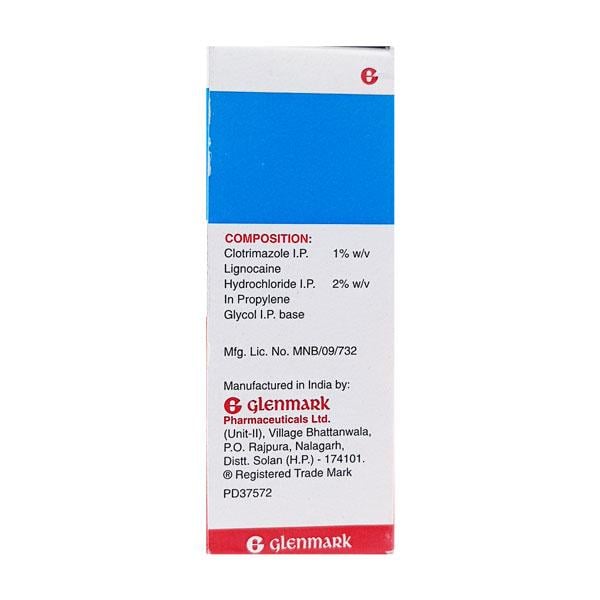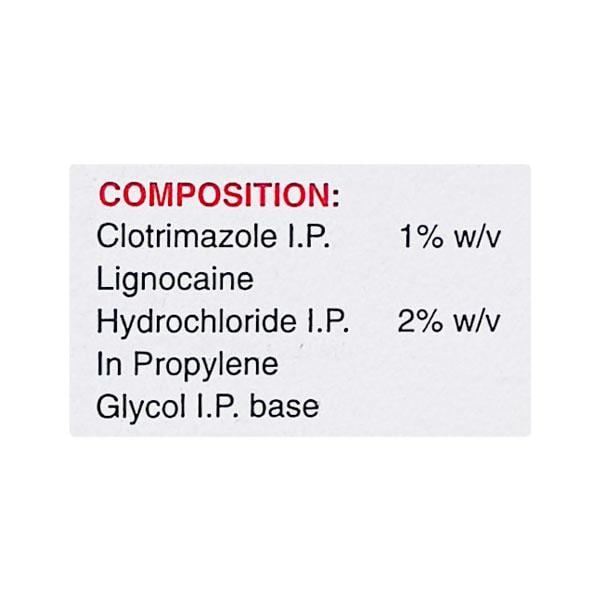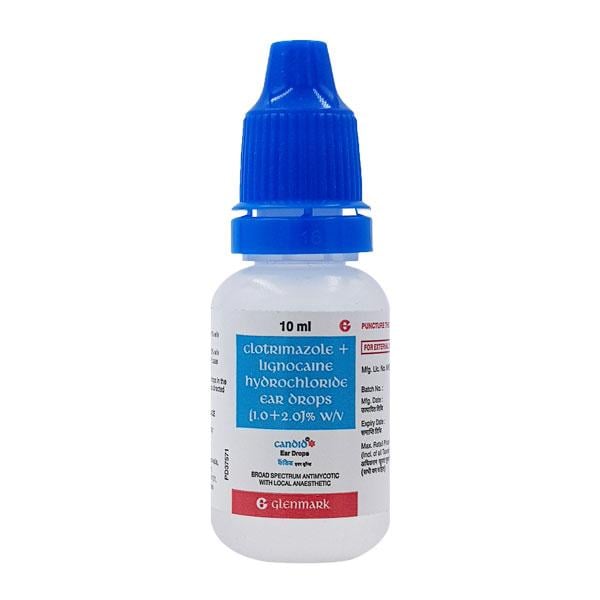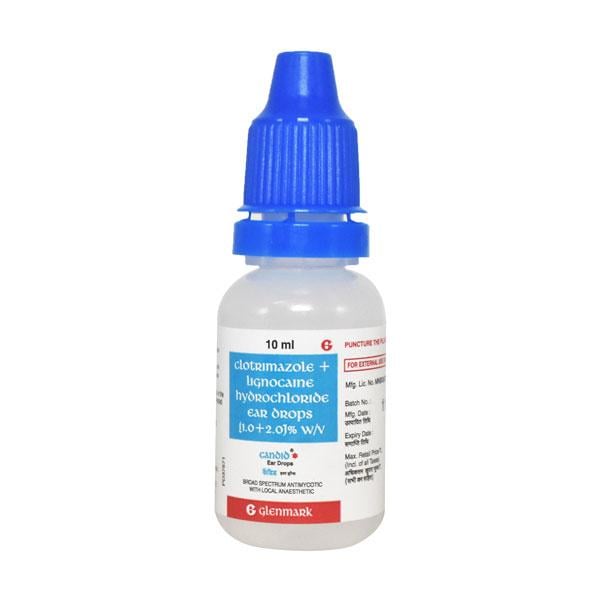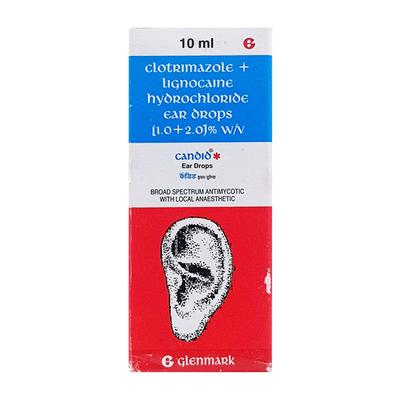

Netmeds First Membership
Quick Links
Introduction About CANDID EAR DROPS
CANDID EAR DROPS is a combination of Clotrimazole and Lignocaine which belongs to the group of medicines called Antifungals and Local anaesthetics respectively. It is used in the management of fungal ear infections. A fungal ear infection is an infection of the ear with a fungus that normally involves the external ear hole to the eardrum (the external auditory canal). hearing loss, a feeling of fullness in the ear, redness of the outer ear, itching, pain, swelling, ringing in the ears and white, yellow, grey, black or green discharge from the ear are the symptoms of fungal ear infection.
Clotrimazole is an antifungal medicine that manages the growth of fungi by changing the structure of their cell walls and provides relief from itching, congestion and swelling in the ears. To relieve ear pain, lignocaine is a local anaesthetic that alters signal conduction in nerves that transmit pain sensations. This collective action is useful in the effective management of middle ear fungal infections.
CANDID EAR DROPS should be used with caution in pregnant women, women planning to become pregnant and breastfeeding women and only after consulting a doctor. CANDID EAR DROPS is not recommended for use in patients allergic to clotrimazole, lidocaine or other local anaesthetics who have a blood disorder called acute porphyria. Although CANDID EAR DROPS is appropriate for all age groups, it should be used with caution in children, adolescents and the elderly. The most common side effects of CANDID EAR DROPS are irritation or a burning sensation in the ear. Consult your doctor if these symptoms become worse.
Uses Of CANDID EAR DROPS
- Manage fungal ear infections
How CANDID EAR DROPS Works
CANDID EAR DROPS provides relief from pain, itching, congestion and swelling in the ears, whereas Clotrimazole manages the growth of fungi by changing the structure of its cell wall and Lignocaine alters signal conduction in nerves that transmit pain sensation. This collective action is useful in the effective management of middle ear fungal infections.
How to use CANDID EAR DROPS
Always use CANDID EAR DROPS as advised by your physician. It is for external use only. Shake well before use. The correct dose and duration of therapy will be decided by your doctor depending on your age, weight and disease condition.
Side Effects Of CANDID EAR DROPS
Common
- irritation
- burning sensation
Rare
Stop taking CANDID EAR DROPS and consult your doctor immediately if you experience any of the following side effects:
- signs of an allergic reaction (rash, swelling of your lips, face, throat or tongue leading to swallowing or breathing problems, weakness, nausea, feeling dizzy or faint)
How To Manage Side Effects
Burning sensation:
Take some rest to relax. Soak a washcloth in either cool or warm water, wring it out and then put it over the ear that's bothering you. If there is no improvement in the symptom, consult your doctor for advice.
Warning & Precautions
Pregnancy
CANDID EAR DROPS is generally not recommended for pregnant women unless considered necessary. Consult your doctor for advice.
Breastfeeding
CANDID EAR DROPS should be used with caution in breastfeeding women as it may pass through the breast milk. Consult your doctor for advice.
Driving and Using Machines
CANDID EAR DROPS has no or negligible influence on the ability to drive or use machines.
Allergy
Do not take CANDID EAR DROPS if you are allergic to clotrimazole, lidocaine or other local anaesthetics.
Others
CANDID EAR DROPS is not recommended for use if you:
- have a blood disorder called acute porphyria
Use in Pediatrics:
CANDID EAR DROPS should be used with caution in children and adolescents (under 18 years of age). Consult your doctor for advice.
Use in Geriatrics:
CANDID EAR DROPS should be used with caution in elderly patients. Consult your doctor for advice.
Interactions
A. Drug-Drug interactions:
Before taking CANDID EAR DROPS, inform your doctor if you are taking any of the following medicine:
- medicine used to manage high blood pressure (Ex. propanolol)
- medicines used for managing stomach ulcers (Ex. cimetidine)
- oral contraceptives (medicines used to manage pregnancy)
- other medicines used to manage ear infections (Ex. framycetin sulfate and gramicidin)
- medicines used in managing glaucoma (Ex. latanoprost, travoprost)
Overdosage:
If you or anyone else accidentally take too much of CANDID EAR DROPS, consult your doctor immediately or visit the nearby hospital. Symptoms of overdose are dizziness, nausea or vomiting.
Synopsis
| Drug | : | Clotrimazole, Lignocaine |
| Pharmacological Category | : | Imidazoles, Local anaesthetics |
| Therapeutic Indication | : | Fungal ear infections |
| Dosage Forms | : | Ear drops |
More Information
- Keep CANDID EAR DROPS out of reach from children
- Store at room temperature
FAQs About CANDID EAR DROPS
Q: How long should I use CANDID EAR DROPS?
A: Use CANDID EAR DROPS exactly as your doctor advised you to. Unless you have been told otherwise, put two to three drops into the affected ear(s) two or three times a day. You will need to use CANDID EAR DROPS until the infection has gone. If you have any doubts regarding its dose, please talk with your doctor.
Q: How to use [GBNKEYWORDS] for ear infections
A: First, wash your hands. Then clean your ear with warm water and then pat it dry. After that, tilt your head a little and hold the dropper from the CANDID EAR DROPS bottle near your ear, applying enough pressure to release two or three drops of solution into your ear. Keep your ear facing upward for a few minutes to allow the solution to reach the affected area. If you still find any difficulty using it, consult your doctor for advice.
Q: In which conditions can the use of CANDID EAR DROPS be avoided?
A: The use of CANDID EAR DROPS should be avoided in patients with known allergies to clotrimazole, lignocaine or other local anaesthetics. Therefore, please inform your doctor about your earlier allergy incidence with clotrimazole, lignocaine or any other local anaesthetics.
Q: What if CANDID EAR DROPS is swallowed accidentally or goes into the eyes?
If CANDID EAR DROPS is swallowed accidentally, rinse your mouth with water immediately. If it goes accidentally into the eyes, wash it with water. In any of the cases, please inform your doctor.
References
1. KD Tripathi. Local Anaesthetics and Antifungal Drugs. Essentials of medical pharmacology. Eighth edition. 20 Page – 392, 843.
2. Bhangale, Charushila J. and Shivanand Hiremath. Validated stability indicating RP-HPLC method for the determination of phenazone and lidocaine hydrochloride in bulk and dosage form. Asian Journal of Pharmaceutical Research. [Revised in June 2015] [Accessed on 3rd June 2022] https://indianjournals.com/ijor.aspx?target=ijor:ajpr&volume=5&issue=2&article=007
3. Dundar, Riza and Ismail Iynen. Single dose topical application of clotrimazole for the treatment of otomycosis: is this enough? Journal of Audiology & Otology. [Revised in January 2019] [Accessed on 3rd June 2022] https://www.ncbi.nlm.nih.gov/pmc/articles/PMC6348305/
4. Bayer AG. Electronic Medicines Compendium (EMC). [Revised in March 2018] [Accessed on 3rd June 2022] https://www.medicines.org.uk/emc/files/pil.2209.pdf
5. Torque Pharma. Exotic Ear Drops. https://www.torquepharma.com/product/exotic-ear-drops/
Useful Diagnostic Tests
- Fungal culture test
- Immunodiffusion (ID)
- Complement fixation (CF)
- Enzyme immunoassay (EIA)










